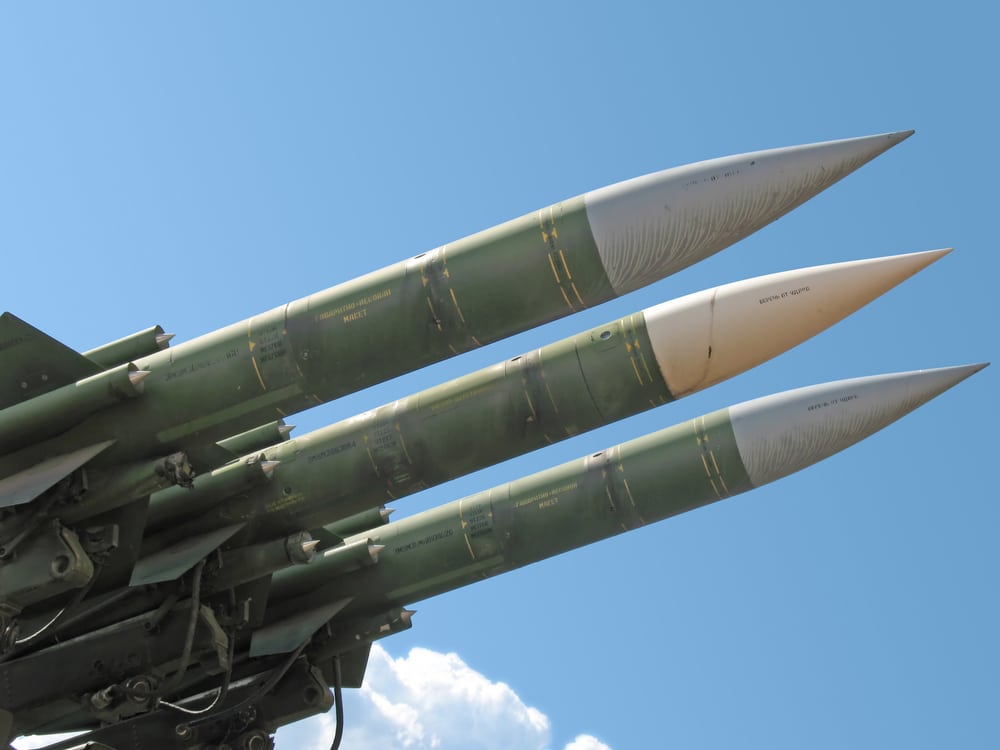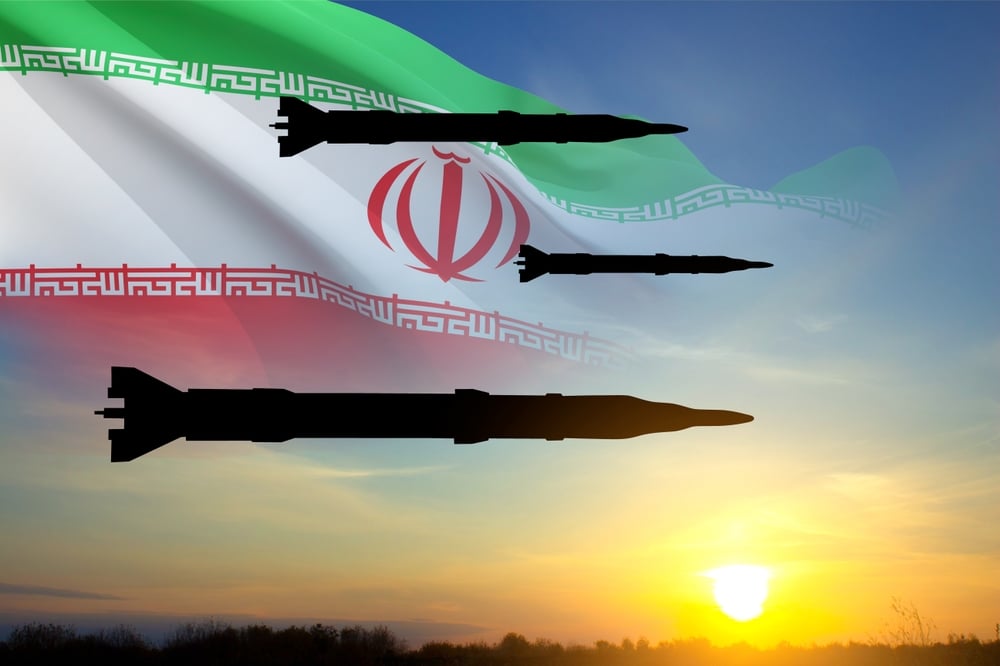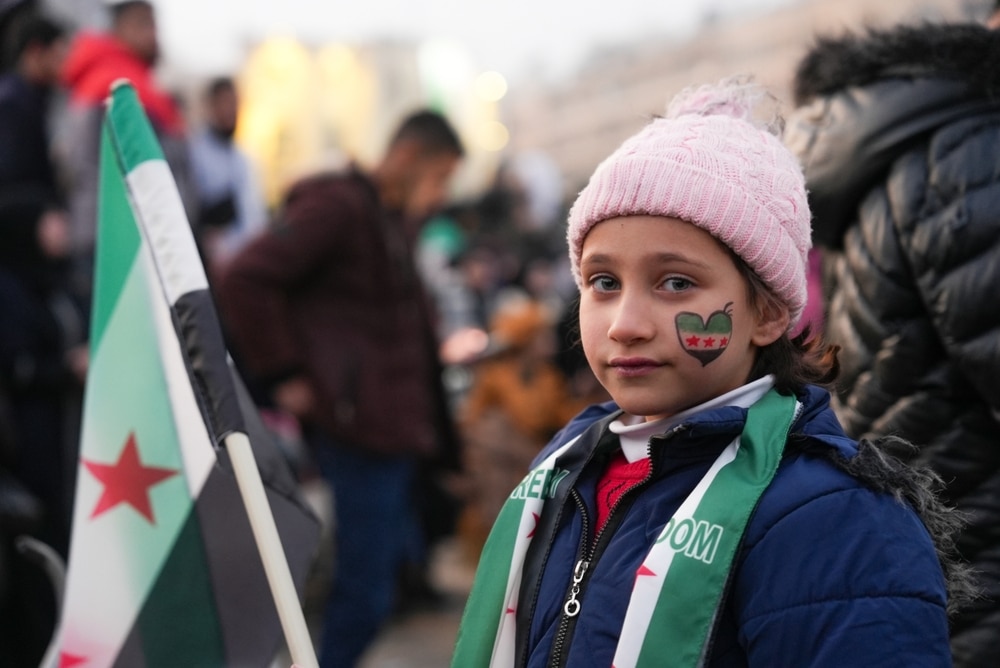1 To Watch
The cost of control: Amman risks the stability it aims to protect
Crackdowns on political opposition and public dissent are increasing the risk of instability in Jordan
May 22, 2025
As global insecurity rises, Saudi Arabia is accelerating efforts to localise defence production.

As global insecurity rises, Saudi Arabia is accelerating efforts to localise defence production.
Europe is rearming in the wake of US President Donald Trump’s return to the White House. Globally, countries are seeking greater security independence amid multiple conflicts, a changing world order and the prospect of greater instability.
Gulf states such as the UAE and Saudi Arabia have been developing domestic defence capabilities for nearly a decade – a move that now looks prescient. Saudi Arabia’s Vision 2030 plan to localise and, in time, export defence materiel has proven judicious – current regional turmoil and disruption to traditional alliances have provided greater impetus to the industry’s growth.
While the Kingdom will remain closely aligned with the US for its defence needs, it is simultaneously working to build an indigenous industry – one that can support economic diversification goals. Achieving this will require developing a skilled national workforce, forming partnerships on sensitive technologies, securing access to critical minerals, and balancing the ever-present tension between Beijing and Washington.
Global military spending reached $2.46 trillion in 2024, a 2.6% real-terms increase from 2023, marking a decade of continuous growth. In the Middle East, hot conflicts in Gaza and Yemen, the collapse of the Assad regime in Syria and the then-prospect of an Israeli–US military strike against Iran all account for an increase in defence spending in MENA of 14% in 2024.
Saudi Arabia is the fifth-largest defence spender globally and the largest in the Arab world. As a proportion of GDP, it outspent Russia and the US in 2024. In the same year, the Kingdom allocated $75.8 billion to defence, constituting 3.1% of global defence expenditure, and increased this to $78 billion in the 2025 budget – 21% of total government spending. However, it remains one of the world’s top five arms importers, heavily reliant on the US (74%), Spain (10%), and France (6.2%) for supplies.
The global trend is now towards localised production, driven by changing geopolitical dynamics, including the growing politicisation of trade and recognition of supply chain vulnerabilities in the wake of COVID-19 and Russia’s invasion of Ukraine – and more recently, instability in the Middle East. Turkey’s battlefield drones and India’s homegrown jets exemplify how new domestically designed, produced and exported defence equipment is changing the nature of the global defence industry.
Saudi Arabia is following a similar path. Its push to build an indigenous defence industry is tied to broader aims under Vision 2030: economic diversification away from oil, reduced dependency on foreign suppliers, enhanced military operational readiness and job creation. However, its ability to realise this ambition will continue to be impacted by dependence on hydrocarbons revenue, human capital limitations and political considerations.
So far in 2025, Saudi Arabia has demonstrated its accelerating defence ambitions with two landmark developments. First, January’s Memorandum of Understanding with Italy’s Leonardo targeting co-production in air and electronic warfare systems and localisation of a national supply chain; and second, the formal inauguration in July of the Kingdom’s first domestically supported THAAD missile battery company in Jeddah, following the country’s first successful domestic manufacture of THAAD launcher components earlier in May. These moves signal the momentum in Riyadh’s bid to localise military production and transform the Kingdom into a global defence player.
To deliver on Vision 2030’s broader goals, Saudi Arabia has set three strategic targets for its defence sector: localise over 50% of military spending and production by 2030, rank among the world’s top 25 defence exporters, and develop a high-tech national workforce.
Oversight and implementation are split between two key institutions: the General Authority for Military Industries (GAMI) regulates the sector and manages licencing; Saudi Arabian Military Industries (SAMI), the PIF-backed industrial champion, is tasked with developing domestic capacity and capability. SAMI alone is aiming for a $3.7 billion GDP contribution, $1.6 billion in research and development (R&D) investments, and 40,000 new jobs by 2030. Broader national targets for defence include a $25 billion GDP contribution and the creation of 100,000 jobs by the end of the decade.
While a relative newcomer, Saudi Arabia is making good progress. Localisation rose from 4% in 2018 to 19.35% by the end of 2024 while the number of licenced facilities across military industries grew from five in 2019 to 296 by the third quarter of 2024. GAMI has signed industrial cooperation agreements with both international and local companies, supported by policy measures such as zero added tax on locally manufactured military goods and foreign investment initiatives like its “Invest in Saudi Arabia” programme. As a result, a steep growth curve in localisation can be expected in the coming years.
Localisation is also supported by GAMI’s Industrial Participation Programme, which mandates that foreign contractors support Saudi industry by transferring technology, enabling domestic manufacturing, and helping to build a skilled national workforce. For example, a 2024 agreement with Spain’s Navantia will see two of three Avante 2200 corvettes finalised in the Kingdom – including the installation and integration of the Hazem Combat System, the first to be developed in and by Saudi Arabia. The contract includes training for Saudi engineers, manufacturing ship components domestically, and transferring intellectual property rights to GAMI, allowing future vessels to be built in Saudi for local and export markets.
In this way, Saudi Arabia is moving beyond assembling foreign technologies to producing its own materiel; developing final assembly lines and integration and systems testing; and local Maintenance Repair and Operations facilities to support equipment used by its domestic security forces. In addition, it has become an exporter of armed vehicles to Nigeria and small weapons to Ireland, Spain and Sweden.
In a notable reversal of historic operating models, the Kingdom signed a deal with Turkey’s ESEN in 2023 to manufacture a Saudi-designed unmanned aerial vehicle in Turkey – the first time Saudi intellectual property will be produced abroad. This deal is just one outcome from a 2013 Saudi-Turkey defence cooperation agreement and reflects growing knowledge exchange on both technology and the development of an indigenous industry with Turkey, whose own defence industry has become a regional benchmark.
While development is happening at pace, several sizeable hurdles will need to be overcome for Saudi Arabia to achieve its 2030 defence objectives.
First, establishing a high-tech industry requires substantial investment. The Kingdom’s economy remains heavily oil-reliant and thus is vulnerable to geopolitical shocks and the uncertain pace of the energy transition. Furthermore, the country has multiple high-cost mega projects underway, including infrastructure for the Asian Winter Games in 2029 and the 2034 World Cup. Defence will not only need to attract international capital but compete with other projects and sectors to secure it.
Second, workforce development is a key bottleneck. The industry requires specialised skills, and most positions must be filled by Saudi nationals owing to the sector’s sensitive nature. The Kingdom is focusing on human capital development, including through the establishment of the National Academy of Military Industries, to address the shortfall in engineers. SAMI alone has expanded from 341 employees in 2020 to almost 3,600 in 2024 – 85% of them Saudi. If the Kingdom is to achieve its targets, this growth must continue unabated.
The Kingdom is also pursuing partnerships with global defence majors, such as Boeing, Lockheed Martin and Turkish firm Baykar, among others, to facilitate knowledge transfer. Simultaneously, Riyadh is diversifying partnerships, signing defence cooperation agreements with countries such as South Korea and Brazil. However, a broader change is also needed; military practitioners with experience working in and with the Kingdom note that a cultural shift towards accountability and independent decision-making is needed within the armed forces. Encouraging adaptive thinking, innovation and responsibility will be critical to ensuring that the transformation is not limited to the physical.
Third, R&D investment remains low. Saudi Arabia allocated just 1% of its defence procurement budget to R&D in 2022, compared to the global average of more than 4% and over 8% in China and the US. Increasing this to 4% – a Vision 2030 goal – will be critical for building an internationally competitive industrial base.
Fourth, competition for access to critical minerals – essential for everything from missile guidance systems to battery-powered drones – is intensifying. China currently dominates production and processing. Saudi Arabia is investing in domestic mining and foreign supply partnerships, yet it will need at least a decade to become an international critical minerals actor.
Finally, technology transfer will remain geopolitically charged. Western partners remain wary of sharing advanced technology due to national security concerns and the risk of sensitive data reaching adversaries. For example, Saudi joint manufacturing facilities with China on drone and missile components and potential cooperation with Russia on developing domestic air or land defence systems would preclude a closer security arrangement with the US.
However, the fact remains that Saudi Arabia’s defence industrial ambitions are deeply tied to its shifting geopolitical strategy. While Riyadh remains a key partner of the US, evidenced by the $142 billion arms deal signed in May 2025, it is simultaneously hedging its bets. Defence cooperation with China has deepened through joint drone and missile development, naval exercises, and industrial technology exchanges, giving Saudi Arabia more leverage in negotiations with Washington. Meanwhile, the Kingdom has cautiously maintained military-to-military dialogue with Iran under the Sino-brokered détente framework, with high-level defence visits continuing as recently as April 2025. In this way, Saudi Arabia is leveraging defence industrialisation to reposition itself as a more autonomous and influential actor in a polarising global order, alongside its economic benefits.
Saudi Arabia is still in the early stages of its defence industrial transition. However, it has made significant progress in a short space of time by prioritising workforce development, investing in R&D and establishing a series of strategic partnerships. The timing of the Kingdom’s initiative to localise defence production could not be any more pertinent given how the changes in the world order are re-shaping global trade and hastening the end of globalisation. As such, there is likely to be an even stronger push for Saudi Arabia to fulfil its ambition to develop a self-sustaining domestic defence industry, while serving the goals of Vision 2030. However, the foundations underpinning this localisation will take longer to shift.

1 To Watch
Crackdowns on political opposition and public dissent are increasing the risk of instability in Jordan
May 22, 2025

1 To Watch
Donald Trump has an historic opportunity to negotiate a much tougher nuclear deal with Iran – will he seize it?
April 3, 2025

1 To Watch
The transitional government must focus on four key areas to ensure that unity is maintained.
December 24, 2024
© Azure Strategy 2025.